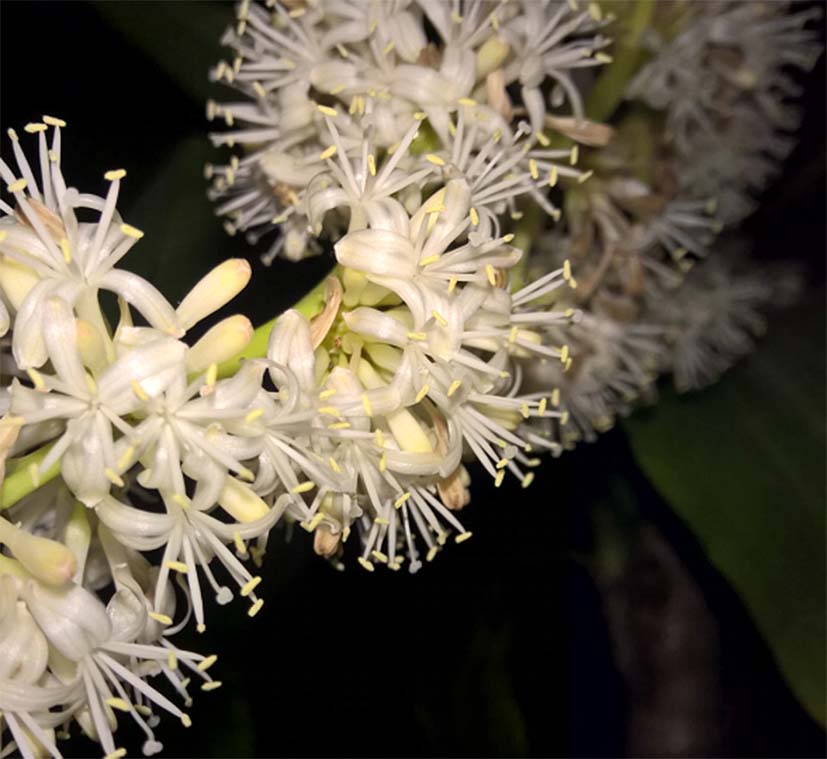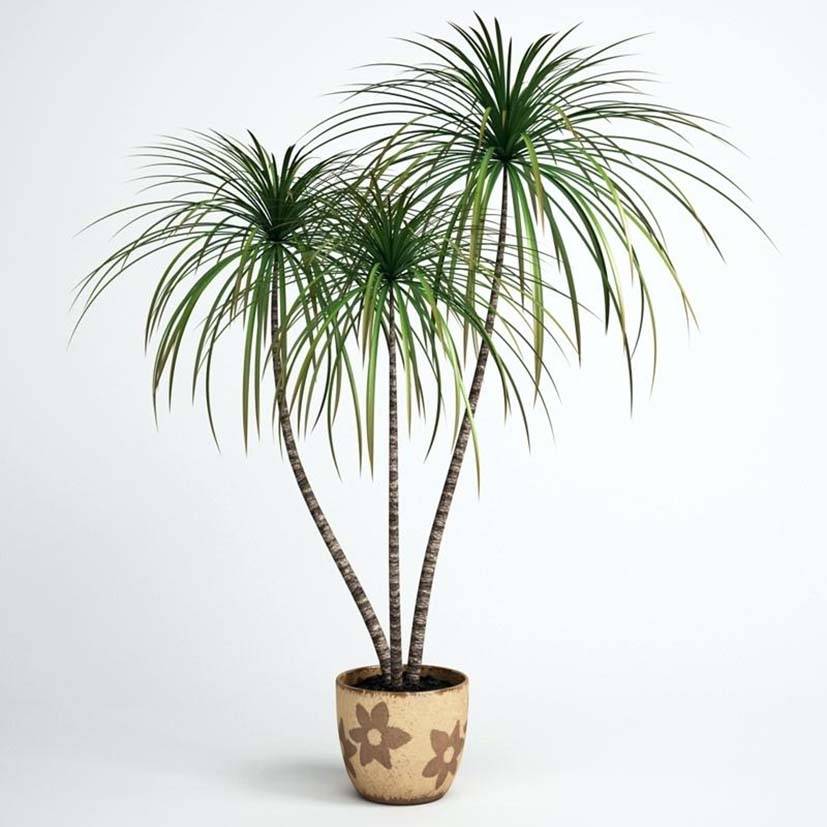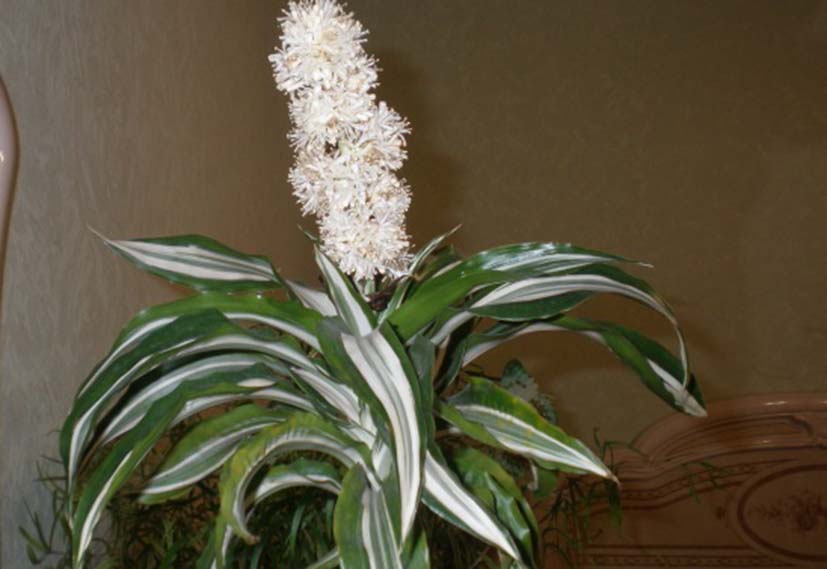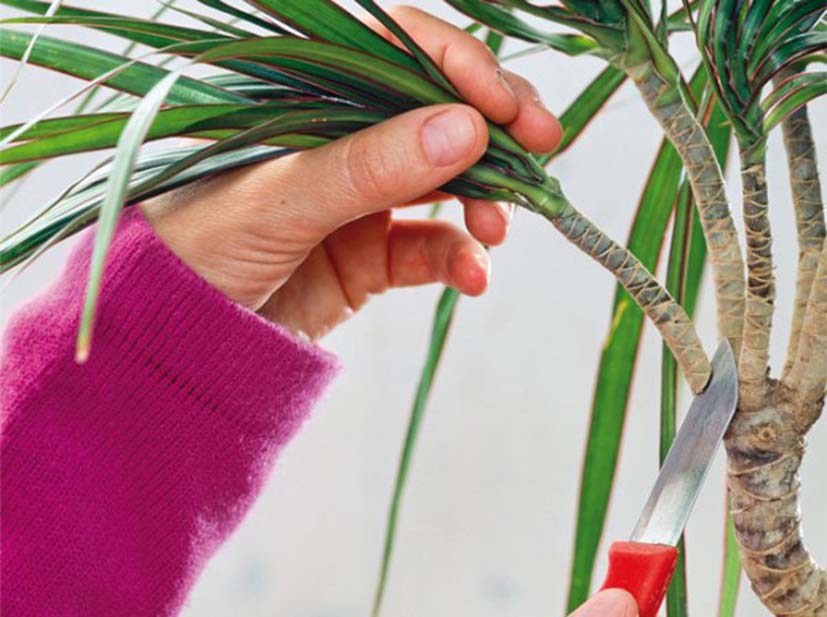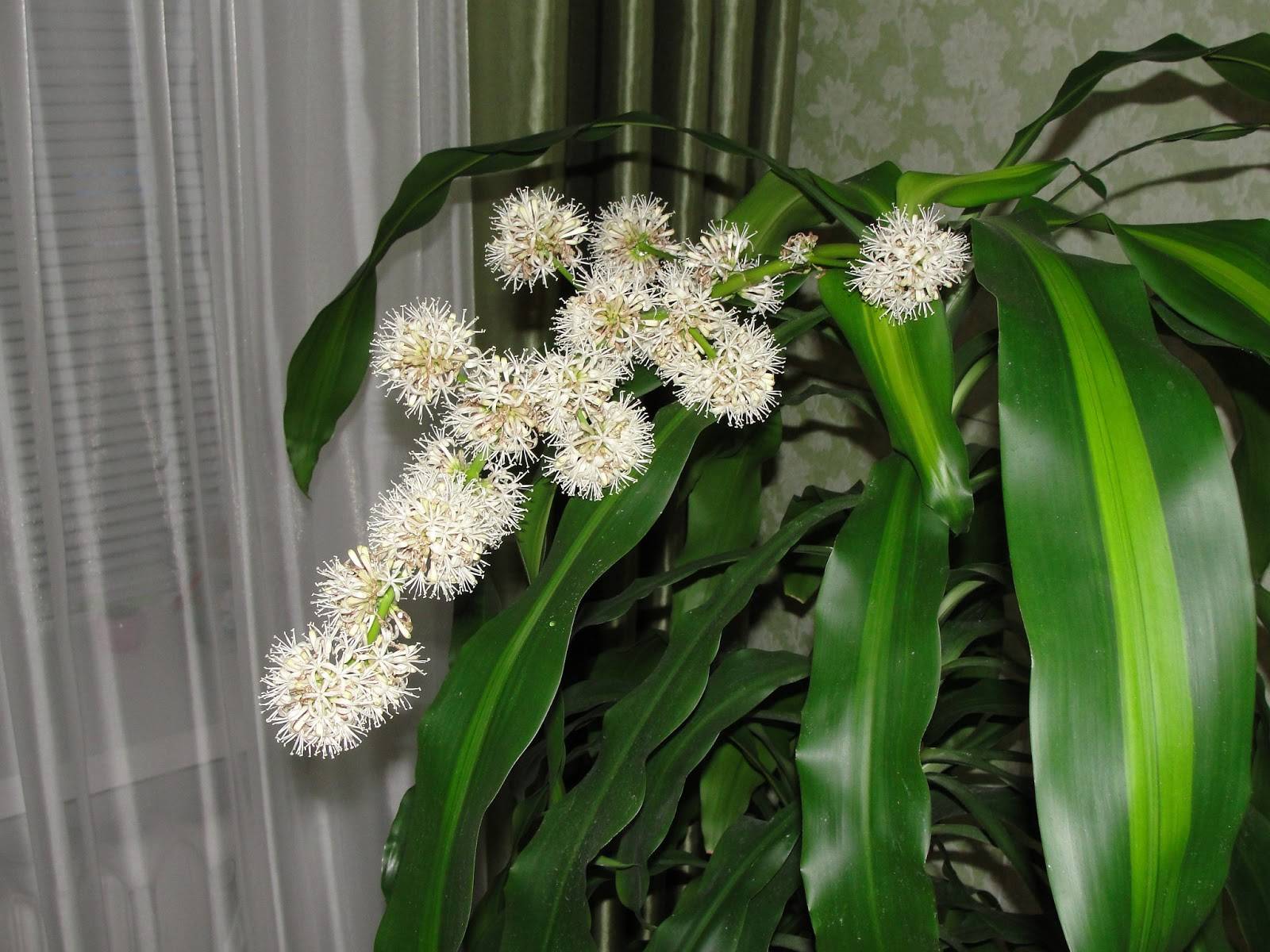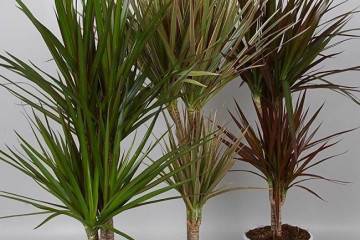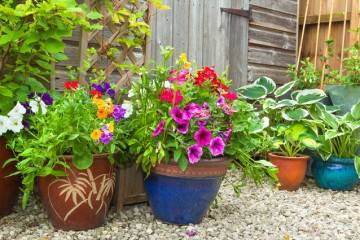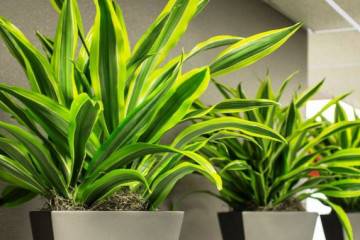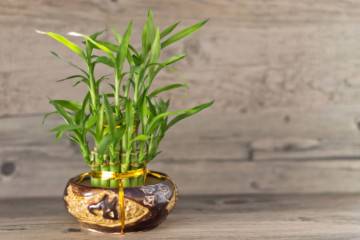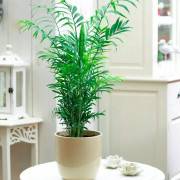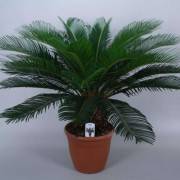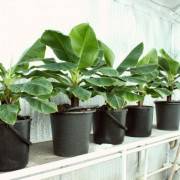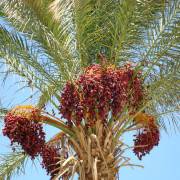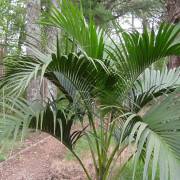How dracaena blooms - what types, proper care
Content:
Dracaena is a popular office plant. A small house palm tree has become an interior decoration. It looks spectacular both in a cozy apartment and in a large production room. They fell in love with her for its powerful energy, because it is not for nothing that this beautiful plant is called the “tree of happiness”. It would seem that a lot is known about this amazing tree, but not everyone knows how dracaena blooms. Seeing dracaena bloom at home is quite problematic. The thing is that it dissolves the buds very rarely.
What varieties bloom
The genus Dracaena includes 113 species. In their homeland in distant Africa and Asia, all dracaena bloom, but only a few in indoor conditions.
- Fragrant (Dracaena Fragrans) owes its name to fragrant flowers. It is this variety that can please the most frequent flowering at home. Sometimes, after flowering, the trunk branches in two. It grows up to 2 m, calmly tolerates low temperatures down to -10 ° C, rather unpretentious in content.
- Godsef (Dracaena Godseffiana) grows as a bush, oval leaves with creamy splashes. The flowers are yellowish green and have a pleasant aroma.
- Deremskaya (Dracaena Deremensis) grows up to one and a half meters. Red inflorescences exude a strong unpleasant odor. For lovers of this beautiful plant, it will be a consolation that flowering is a rare phenomenon, perhaps because it grows very slowly. Surprisingly, the Varneschi house palm from the Dracaena deremska variety blooms very beautifully. Throws out long, fragrant panicles of a milky white color.
- Bordered (Dracaena Marginata) is the most common and tallest of all species. Against the background of the original coloring of the foliage (green leaf with a purple border), the flowers are completely unsightly. The off-white inflorescences give off a very concentrated, pungent odor.
How often it blooms
In nature, wild dracaena begins to bloom at a young age. This occurs at 5-7 years of age. Indoor plants bloom only when comfortable conditions are created. The phenomenon is almost incredible. It is difficult to wait for flowering, which happens every 7-10 years. Flowers develop for a long time, for more than a year a peduncle is formed in the leaf axils. Some types of fragrant dracaena delight with their fragrance every 3-4 years.
Dracaena flowering conditions
In order for the dracaena to bloom, you need to create tropical conditions for it. This includes three components:
- temperature (from 25 ° C to 30 ° C);
- humidity (about 65%);
- spaciousness (height 3 m).
Achieving the African heat is quite simple: you should take the plant out to a sunny loggia for the entire summer period. In this case, it is imperative to protect against direct hit of burning rays so as not to scorch the foliage.
Palms love frequent warm showers. On hot days, you can do this several times. For better moisture, it is recommended to place the flowerpot in a wide tray filled with expanded clay or pebbles.
In small stuffy rooms, the plant will have no desire to bloom. High ceilings, free space, a spacious pot will give an incentive for flowering.
Fragrance can bloom in two types of flowers: white or small light green flowers. It is impossible to miss this event. With the onset of dusk, a fragrant bouquet of all kinds of smells begins to spread. The aroma of jasmine, lilac, honey, freshly cut grass with hints of astringency evokes a feeling of triumph and delight. At dawn, the flowers fall, the aroma disappears and the holiday ends. This is repeated every evening for a month.
In tropical forests, the dracaena tree attracts insects and hummingbirds with its frantic scent. They fly in to feast on sweet syrup, huge drops of which run down the trunk and leaves.
How often to water when blooming
Many people think that dracaena is a palm tree. In fact, this is a perennial shrub, albeit evergreen, but not blooming enough, loving abundant watering.
Watering during flowering should be done as on normal days. Given that the flowering period occurs at the end of summer, it is worth carefully monitoring the moisture content of the soil. In dry hot weather, watering is required frequent without drying out the earthen coma. Care should be taken not to allow overflow or stagnation of moisture. With excess moisture, the leaves become covered with brown spots, curl, turn yellow. From lack of watering, their tips and edges dry, turn yellow and fall off.
The health of the dracaena and the possibility of flowering depend on the quality of the water. Impurities of chemicals, especially fluoride, are often present in untreated water. You can find out about the accumulation of these substances by the formation of light spots on the leaves of the plant, often from the lower side. This leads to diseases such as chlorosis and necrosis. Therefore, water for irrigation is defended, filtered by adding charcoal.
Other nuances of care
Dracaena are the most unpretentious plants. Caring for them is not difficult, it does not take much time. Here are the highlights:
- constantly spray with water at room temperature;
- arrange a shower;
- protect from drafts;
- ventilate regularly.
Dracaena flower: what it brings to the house, how to care
Dracaena bloom, since it is quite rare, is associated with some signs. Many believe that dracaena is able to destroy the bad energy of the house and cleanse it of negative influences. She can bring love and family happiness, restore harmony in relationships, recreate coziness and a special microclimate.
It is believed that during the period when the plant is preparing to bloom, good luck is attracted. At this time, success in financial affairs, career growth, or simply luck in the lottery will accompany.
If you are lucky to see the dracaena bloom, you need to share this joy with your loved ones, giving them a piece of this miracle. This is easy to do. The plant propagates by cuttings. It is necessary to cut off the top 10-15 cm below the leaves and plant after a little drying in a wet mixture consisting of equal proportions of sand and peat. The flower should be grown in a warm place. You can protect from drafts with a greenhouse made of a plastic bag, not forgetting to ventilate.
The lower part of the plant, which remained in the pot, is sprinkled with activated charcoal, and the pot is placed in a dark but warm place. It is worth not watering until the dormant buds are touched on the trunk. If there are a lot of stems, some can be cut off and planted separately. Pruning is best done when the tree is actively growing - in spring or summer. What part to carry for a gift, each grower decides for himself.
Taking care of dracaena during rest (from autumn to spring) is quite simple. Water only when the soil is dry. It is enough to feed once a month with half the dose. With the beginning of growth in the summer, increase the feeding up to 2 times a month with fertilizers for palms and dracaena.
The house palm dracaena is a beautiful and stylish plant. Simple caring for it will give a lot of positive emotions, the peak of which will be the extraordinary flowering of an amazing tree.
